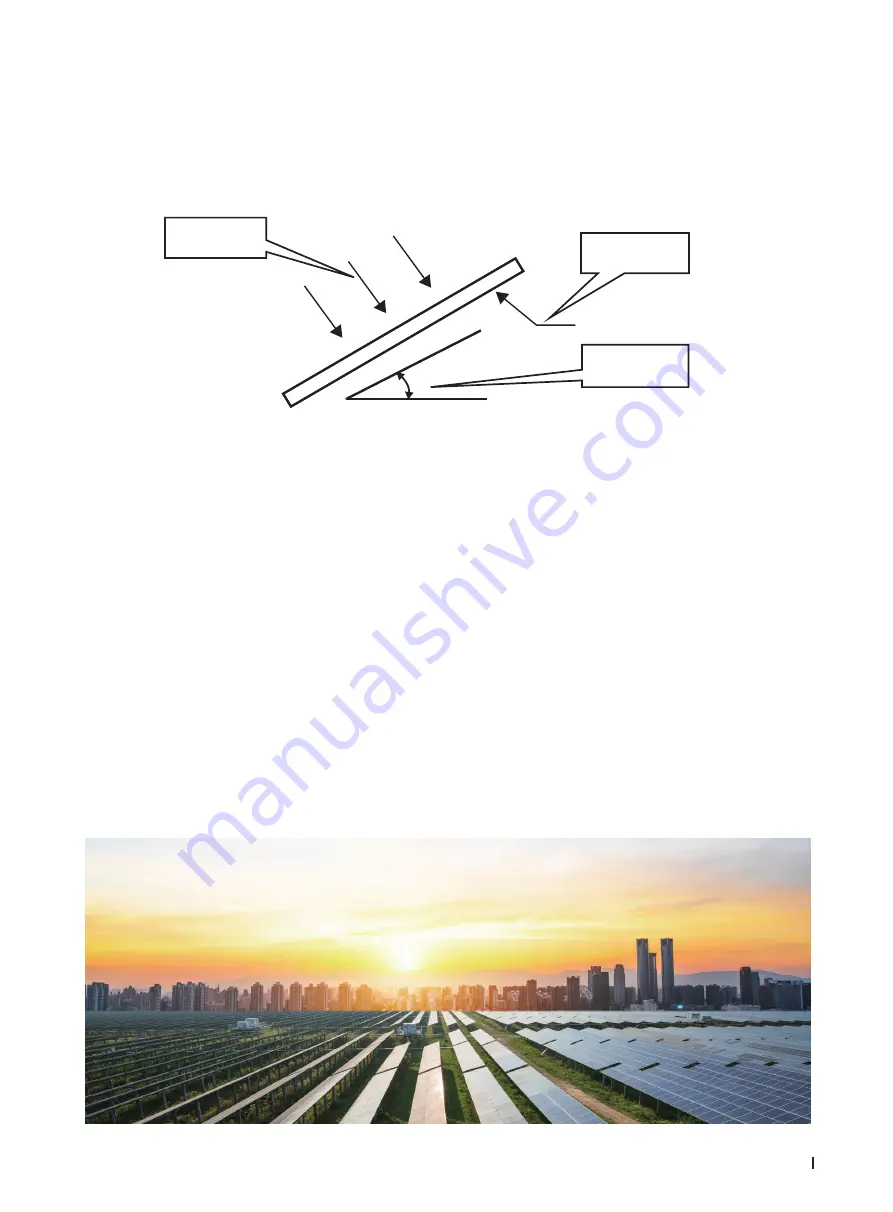
12
Module
Tilt Angle
Sun Light
4.2 Selection of Tilt Angles
Tilt angle of PV modules refer to the included angle between module surface and horizontal ground. The module will
obtain the maximum power output when directly facing the sunlight.
Modules are preferred to be south-facing in the north hemisphere and north-facing in the south hemisphere.
Please refer to standard modules installation guideline or suggestions from experienced PV module installer, for the
specific installation angle.
LONGi suggests that tilt angle of module installation be no less than 10°, so module surface dust can be washed away
easily by rainfall and frequency of cleaning can be reduced. And it is easy for accumulated water to flow away physically
and avoid water mark on the glass surface which may further affect module appearance and performance.
LONGi modules connected in string should be installed with the same orientation and tilt angle. Different module orienta-
tion and tilt angle may result in different levels of solar irradiation and also power generation. In order to achieve the
maximum annual generating capacity, the optimal orientation and inclination of PV modules in the installed area should
be selected to ensure that sunlight can still reach to modules even on the shortest day of the year.
If LONGi modules are used in off-grid System, the tilt angle should be calculated based on seasons and irradiation to
maximize the output power. If the modules output power meets the acquired load under the period of the worst irradiation
in the year, the modules should be able to meet the load of the whole year. If the LONGi modules are used in grid-con-
nected system, the tilt angle should be calculated based on the principle to maximize the yearly output power.














































